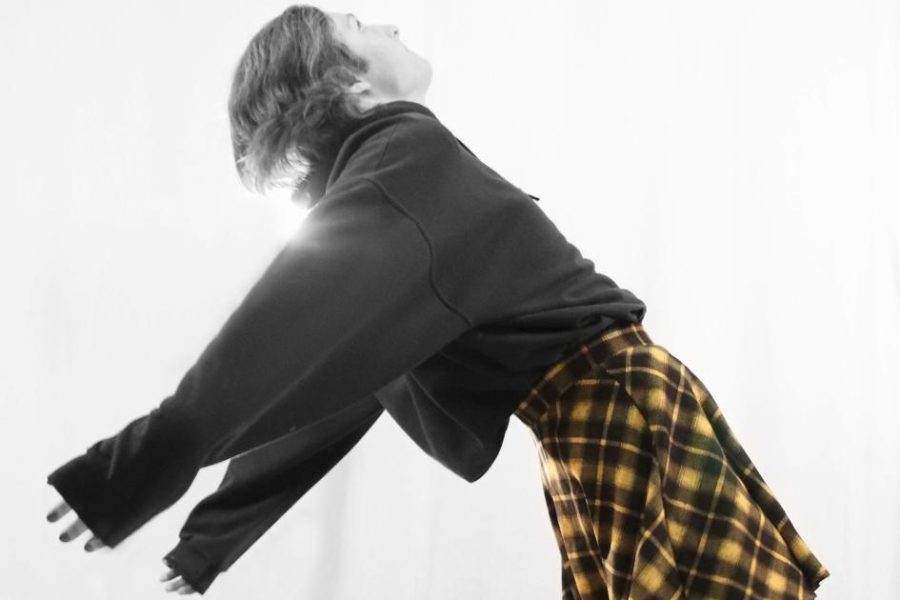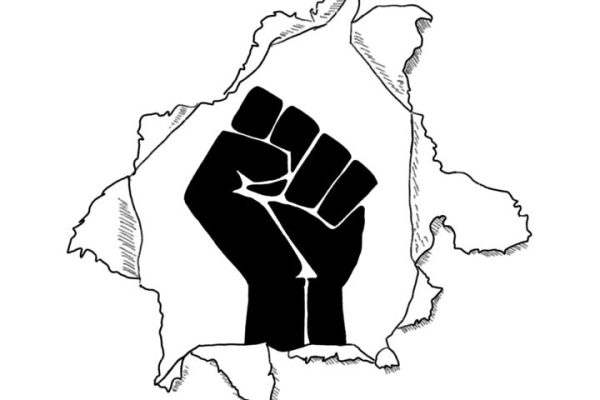Rewriting clothing norms
Elliot Manley, sophomore, believes clothing shapes a person’s identity.
As Elliot Manley, sophomore, walks down the aisles of Target searching for a new pair of pants, he browses for something that will bring him more comfort than a soft fabric can provide. Manley believes clothes have an impact on people and that he uses clothing as a way to show his personality. He said he prefers to purchase his clothes from stores such as Goodwill and Target because they provide him with clothing that makes him feel represented.
“I think clothing is an important part of someone’s identity,” said Manley. “It can let them express themselves [however] they want and help them present who they [are].”
Manley said many male students typically do not wear more feminine-styled clothing. Despite this, he said he often wore skirts last school year.
“I broke the stereotype of wearing what is expected of me because I’m a guy,” Manley said. “Most guys at our school don’t wear [clothes] like that because it seems [abnormal]. ”
Manley said that the most controversial clothing item he has worn are fishnet leggings. Sometimes he would receive compliments on his outfit, but other times he could hear people laughing in the halls.
“I didn’t really mind, it is what it is,” Manley said. “A lot of people didn’t really like [what I wore], which I think shows how people are scared to be self-expressive and do what they want.”
Manley said teachers approached what he wore differently than they would have with female students. He said he never got called out for wearing clothing that was more revealing.
“I know a lot of [girls] get dress-coded [for wearing fishnet leggings], and I didn’t,” Manley said. “I guess that shows how different it is for me versus other people.”
Taeko DeKoter, junior, said when it comes to clothing, comfort is more important than breaking stereotypes. She said in order to reflect who she is, her clothing needs to suit her preferences.
DeKoter has become known for wearing unique clothes. She brought back the idea of luxury when it comes to the styles she wears.
“I used to be known for wearing corduroy,” DeKoter said. “[Corduroy] isn’t really a [common] thing among people our age but I don’t let that [influence] what I wear.”
Despite her different sense of style, DeKoter said she does not receive comments on her clothes often. She said she tends to only hear opinions from people she knows.
“Most of the time it’s just my friends saying they like [my outfit],” said DeKoter. “[Usually] people don’t react too strongly because they don’t see it as a big deal.”

Sav Heineman, sophomore, said she wears clothes that reflect her interests and hobbies. She said she tends to lean toward colorful and unique outfits, rather than bland attire.
“I feel like colors can really tell [you something] about a person,” Heineman said. “I don’t wear all black because I feel like it’s boring. I wear a lot of colors, which I think shapes my personality.”
Heineman said she dislikes some styles that are directed toward women. She said that she has never liked them and has almost completely eliminated them from her wardrobe.
“I strongly disagree with the stereotype of girls wearing dresses,” Heineman said. “I also don’t like skirts that much because they’re mainly directed towards women.”
Heineman prefers to wear clothes that she is comfortable in, no matter which gender it is specifically designed for. Since she dislikes most styles geared toward women, she said she finds more comfort in clothes designed for men.
“I wear a lot of men’s clothing, [such as] jeans that are made for men,” Heineman said. “I also hate skinny jeans which are targeted toward girls.”

Heineman said while clothing has become more inclusive to people who identify in all sorts of ways, there are still rules put in place to control particular groups of people, specifically women. However, she is still able to express herself how she wants and wear clothing that makes her feel represented.
“I wore crop tops and I never got dress-coded,” Heineman said. “I feel like they specifically pick people with certain body types. If two girls wear the same shirt, but one has a [larger chest], then it’s obviously going to show more.”
Your donation will support the student journalists of Kirkwood High School. Your contribution will allow us to purchase equipment and cover our annual website hosting costs.

She/Her
Hobbies and Interests: dance, writing & spending time with friends and family
Favorite movie: Dirty Dancing
Favorite Quote: “May...

She/Her
Hobbies and Interests: track, basketball, reading
Favorite song: ARE WE STILL FRIENDS by Tyler, the Creator
Favorite Quote: "The only...















